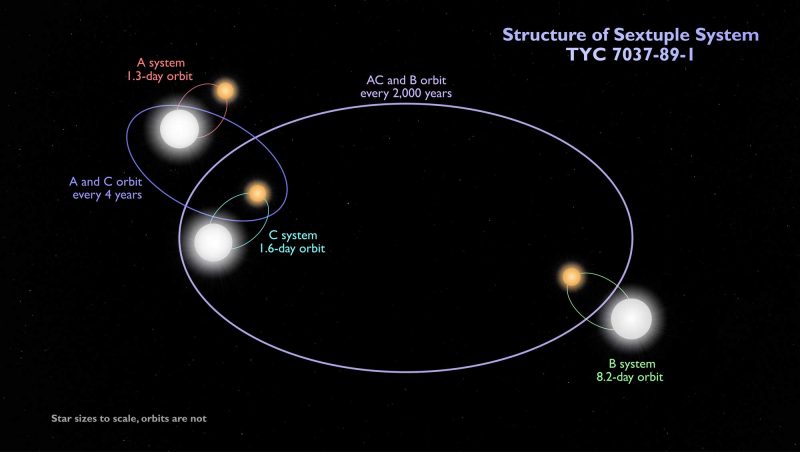Do you remember seeing the original Star Wars (now officially Episode IV: A New Hope), which was first released in 1977? Do you recall two suns in the sky over the planet Tatooine? How weird was that?
Actually, not weird at all. Our mono-star solar system seems to be more the exception than the rule. It’s not unusual for a system to have two, three or more stars. In fact, astronomers recently announced they’d found a six-star system – three pairs of double stars – where all of the stars produce eclipses.
This system has been given the designation TYC 7037-89-1 (or TIC 168789840), and it’s about 1,900 light-years away in the general direction of the constellation Eridanus the River. A paper announcing the discovery has been accepted by The Astronomical Journal; a pre-publication version can be read at https://arxiv.org/abs/2101.03433.

If this sounds complicated, it is. A two-star system, a binary, is when two stars orbit each other (technically, they orbit a common center of gravity). Some of these systems are known to be eclipsing binaries: the two stars eclipse each other as seen from our perspective on Earth. This six-star system is logically called a sextuplet. It’s actually not the first sextuplet to have been found. However, it’s the first discovered system with three eclipsing binaries. In other words, it’s three pairs of double stars with orbits that fall into our line of sight, so we can directly observe the eclipses.
The more we observe the heavens, the more we see that are wonderous, puzzling, and just plain weird.
